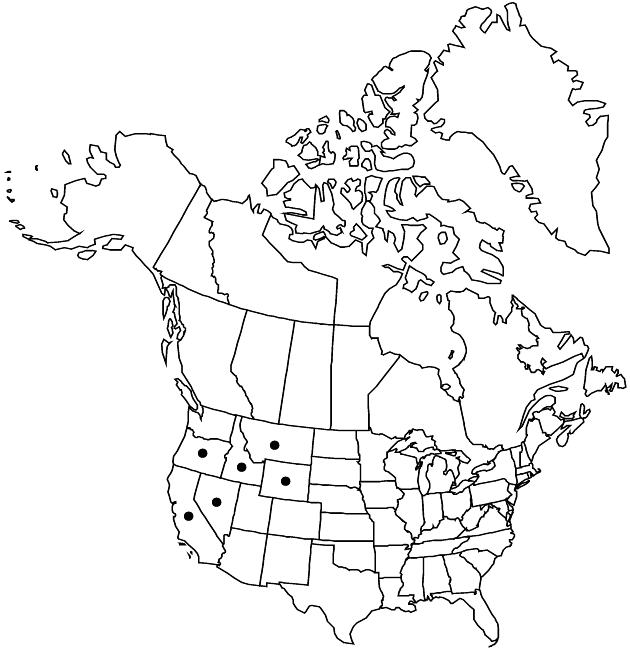Cirsium cymosum var. canovirens
Sida 21: 212. 2004.
Common names: Graygreen thistle
Endemic
Basionym: Carduus canovirens Rydberg Mem. New York Bot. Gard. 1: 450. 1900
Synonyms: Cirsium canovirens (Rydberg) Petrak
Treatment appears in FNA Volume 19. Treatment on page 136.
Larger heads 15–25 mm diam. Outer phyllaries usually much shorter than inner; glutinous ridge prominent, well developed, appearing dark brown on dry specimens. 2n = 34 (as C. canovirens).
Phenology: Flowering spring–summer (Apr–Aug).
Habitat: Grasslands, sagebrush steppe, pinyon-juniper woodlands, dry coniferous forests, roadsides
Elevation: 600–2600 m
Distribution
Loading map...

Calif., Idaho, Mont., Nev., Oreg., Wyo.
Discussion
Variety canovirens occurs from the dry mountains and valleys of eastern Oregon and the rain shadow slopes of the northern Sierra Nevada eastward across the northern Great Basin to Idaho, southern Montana, and western Wyoming. D. J. Keil and C. E. Turner (1993) recognized a polymorphic Cirsium canovirens that included C. subniveum (here treated as C. inamoenum). My subsequent investigations indicate that the merger of those taxa was erroneous, based in part on mis-identified specimens.
Selected References
None.
Lower Taxa
None.